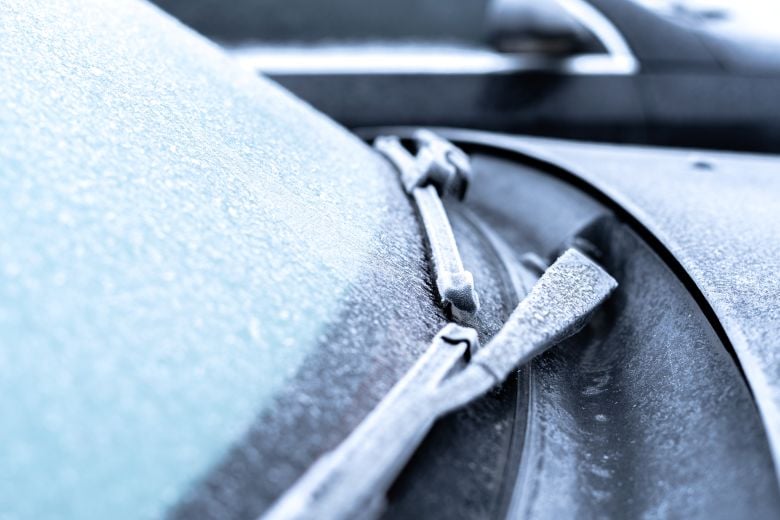
What Type of Windshield Wipers are Best for Your Vehicle?
- Vehicle Maintenance
- PEAK
- September 10, 2025
Learn about the various wiper blade designs and how they improve visibility.
Visibility plays a huge role in keeping you safe behind the wheel, especially in bad weather. Windshield wipers are your first line of defence against rain, snow, sleet, and the splash-and-spray factor that comes with wet road conditions.
Many drivers don't realize it, but wiper blades come in multiple types differentiated by their blade designs. Each design has unique performance characteristics, and some are better suited than others for particular climates and driving conditions.
To choose the right type of windshield wipers, you should know about the various blade designs and how they work to improve visibility. Design types include:
- Conventional blades
- Beam blades
- Hybrid blades
This guide to the different types of windshield wipers explains the pros, cons, and unique features of each blade design. Use it to help you decide which type you need for PEAK® visibility, based on your preferences and driving habits.


Conventional wiper blades
Simple, economical, and familiar, conventional blades combine a metal frame with a wiping element made of specially engineered rubber. The frame pivots as the blade moves, keeping the rubber element positioned against the surface of your windshield as it works.
While conventional wiper blades appear to remain flush against your windshield glass as they move, most designs actually have only about six to eight points of physical contact. This is because of their relatively straight design, which is a product of the rigid metal frames these blades use.
Beam wiper blades
Beam blades swap out the rigid metal frame found in conventional blades for a flexible, contoured alternative. Typically made with a beam of steel, these blades have the unique ability to "hug" your glass by wrapping the blade around the curvature of your windshield surface. This design creates constant contact between the blade and the glass across the entire blade length removing rain, snow, ice, and debris more efficiently. Because there are no exposed parts with beam blades, it makes them ideal for all-season use.
Wind can also be a factor in windshield wiper performance. Heavy winds create air resistance pathways, which can draw conventional blades slightly off your windshield surface. Your blades will underperform without consistent glass contact, which is the last thing you need when blustering winds accompany rain, sleet, or snow.
Beam blades actually use the wind to their advantage, turning it into a kind of leverage that keeps the blade in close contact with your windshield. This delivers a clean, complete wipe, even when the weather is at its worst.
Hybrid wiper blades
Hybrid blades consist of a pivoting metal frame and a sleek, durable shell typically made of engineered polymer or rubber. They combine the durability and uniform, consistent pressure of conventional blades with the aerodynamic precision and performance of beam blades.
Smooth, quiet, and efficient, hybrid blades have become a very popular alternative to conventional wipers. They also hold up well in heavy precipitation and severe weather thanks to the metal frame's added strength.


Pros and cons of each wiper blade type
Each blade design has its own distinct advantages and disadvantages, which you should closely consider to identify the best type of windshield wipers for your driving situation.
Here's a summary:
| Pros | Cons | |
| Conventional Wiper Blades |
Economical and affordable Strong, sturdy construction Easy to replace Universally available |
Tend to wear down quickly in harsh weather conditions Wind resistance not factored into design, potentially leading to loss of contact with your windshield in strong winds Limited contact with windshield, which may result in streaks or incomplete glass clearing Prone to freezing in very cold winter weather |
| Beam Wiper Blades |
Strong performance in harsh weather Quiet and durable Aerodynamic design maintains better contact with windshield glass, even in extreme conditions Will not freeze even in very cold winter weather |
Typically more expensive than conventional or hybrid wiper blades Beware of low-cost, low-quality imitations |
| Hybrid Wiper Blades |
Combines the strength of conventional blades with the performance advantages of beam blades Quiet Superior performance in heavy precipitation |
Typically more expensive than conventional wiper blades (but usually less costly than beam blades) May be less readily available as an aftermarket option Middle-of-the-road product that trades off some durability for some performance improvements May freeze in very cold winter weather |
If you're looking for PEAK® performance from your wiper blades, we have you covered no matter which type of blades you prefer. Our lineup of wiper blades includes conventional, beam, and hybrid options. In the next section, we highlight some specific PEAK® products for different types of driving and climate conditions.
What type of windshield wipers should you buy?
"What type of windshield wipers do I need?" is a very common question, as the different types of windshield wipers function best in different conditions. If you've considered the pros and cons of each blade design and you still aren't sure which to choose, looking at your performance needs can help you identify the right product.
Here's a breakdown:
| Best For | Recommended PEAK Products | |
| Conventional Wiper Blades | Mild to moderate climates where heavy precipitation is rare | |
| Beam Wiper Blades |
Climates where high winds and/or heavy precipitation occur regularly Climates with long, snowy winters |
|
| Hybrid Wiper Blades |
Variable climates prone to changing weather conditions Climates with long, snowy winters |
If you're still not sure which blade design is right for you, consider beam wipers. As they offer the best performance and are the leading blade style being used on Original Equipment vehicles.


Don't forget your rear window
While it's easy to overlook, your rear window wiper also plays a big role in maintaining visibility. During wet or snowy weather, your rear wiper helps you change lanes safely, monitor your blind spot, stay on top of traffic developments behind you, and back up with more confidence.
As a recommended best practice, replace your rear wiper blade every time you change your front blades. That way, you'll never lose track of your blade replacement schedule and you'll optimize your 360-degree visibility.
PEAK® Rear wiper blades are universally compatible with beam, integral, and conventional wiper arms. Add one to your cart whenever you buy new wiper blades for your front window.
Get the most from your new blades
In addition to replacing your wiper blades every 6-12 months, you can help your blades maintain like-new performance for longer by taking good care of them. Consult our guide to extending the life of your wiper blades for complete details on how to get the most out of your new windshield wipers.
Need help installing your new PEAK® wiper blades? All PEAK® windshield wipers come with complete installation instructions in the packaging, but we also have other resources if you need extra guidance. Start with our instructions for removing and replacing wiper blades, which has complete tips for Hook, Side Lock, Push Button and Pinch Tab wiper arm attachments.
You'll also find product-specific instructional videos in the PEAK® DIY Hub. These expert led tutorials are the perfect accompaniment to your new windshield wipers.

